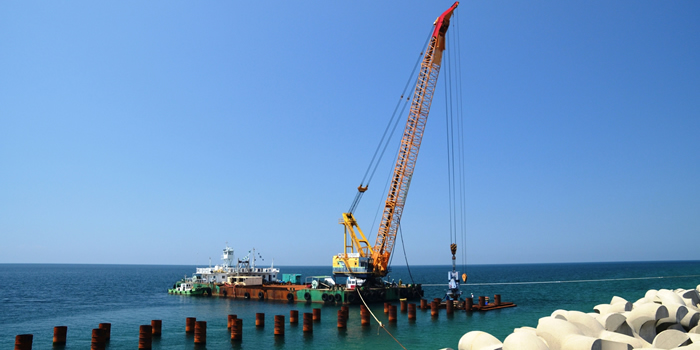JAPAN Overview
Disaster Prevention,

In recent years, there is growing concern for climate change caused by global warming. Weather disasters such as typhoons and heavy flooding are becoming increasingly severe. Some areas of Southeast Asia suffer damage from frequent tsunamis. As office buildings and commercial facilities grow larger in size, there are more urgent needs for thorough measures against earthquakes and fires. Also, measures are necessary from a variety of perspectives; for instance, anticipation and prevention for disasters and response in the event of a disaster. Today, corporations throughout the world are expected to formulate advance measures for preventing disasters and reducing the risk of disasters, as well as business continuity plans (BCP).
The performance of seismic isolation and resistance technology in Japan has advanced greatly since the Great Hanshin-Awaji Earthquake in 1995. Based on experiences with earthquakes and typhoons, Japan has utilized its superior technological capability to develop innovative technology for disaster prevention and disaster risk reduction. The technology will surely be of great use throughout the world.
For example, the technology of seismic damping and isolation in Japan is recognized as the highest in the world. Japan has also performed soil stabilization based on geological surveying. There is also development of advanced products and technologies for use during disasters; namely, private household water pipes, water purifiers, emergency toilets and water supply systems. In addition, Japan has developed a variety of innovative technologies for disaster risk reduction and disaster prevention. Examples include technology to prevent landslides caused by torrential rains and earthquakes.
When preparing for events such as disasters and lightning strikes, peace of mind can be achieved by preparing useful emergency equipment like solar power, emergency power supply and batteries.
In terms of information, a variety of prediction services and services providing details on the status of damage are now available in Japan. Furthermore, disaster information systems for assisting in response through real-time sharing and effective utilization of disaster status information are being developed on a national level.
Information on companies providing these innovative technologies is available on the J-GoodTech website. We encourage you to maximize these technologies to enhance measures for disaster prevention and disaster risk reduction.


